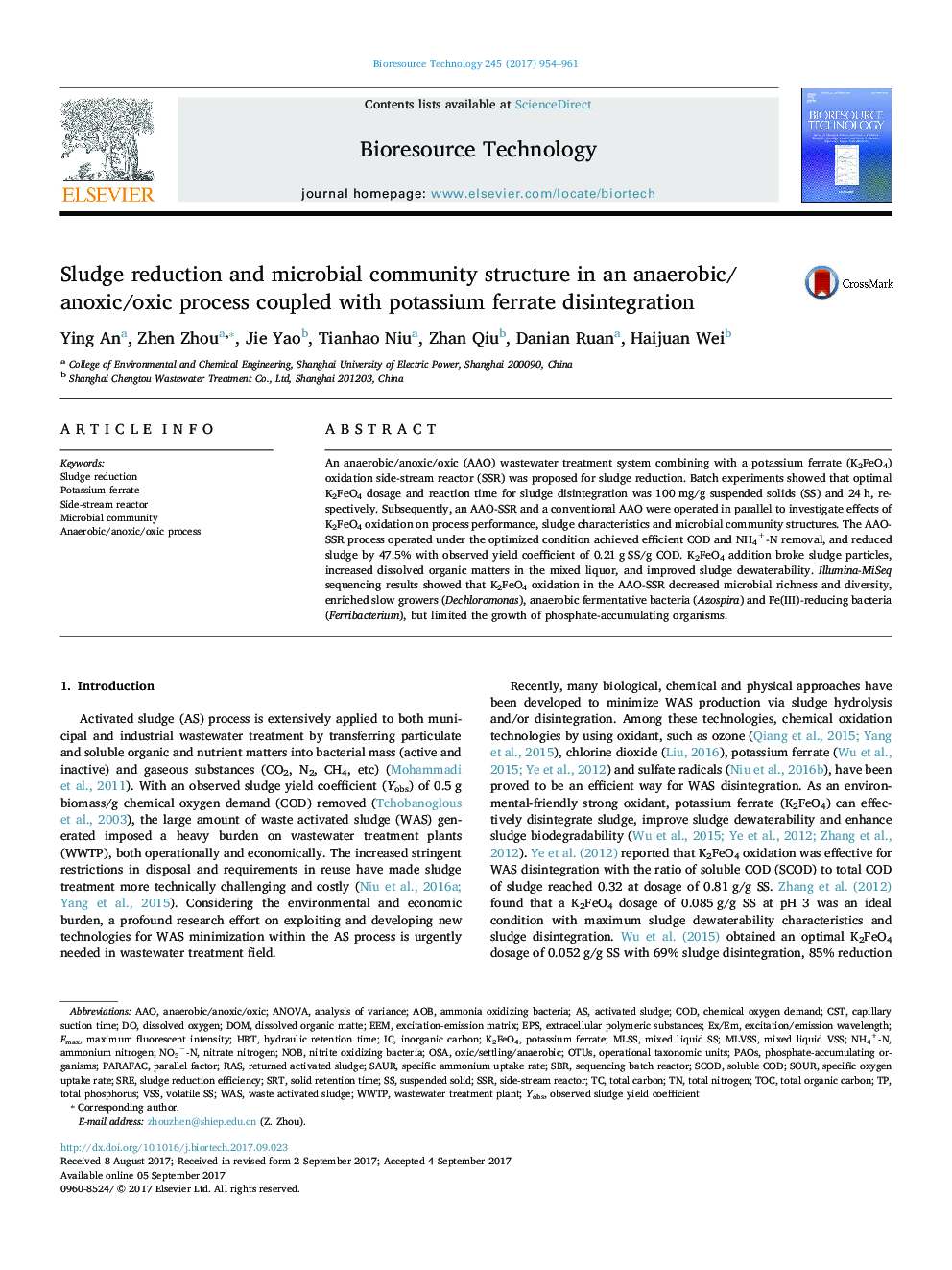| Article ID | Journal | Published Year | Pages | File Type |
|---|---|---|---|---|
| 4996802 | Bioresource Technology | 2017 | 8 Pages |
â¢A K2FeO4 oxidation side-stream reactor (SSR) was proposed for sludge reduction.â¢The AAO-SSR reduced sludge by 47.5% at 0.1 g K2FeO4/g SS and 24 h hydrolysis.â¢K2FeO4 oxidation decreased microbial richness and diversity in the AAO-SSR.â¢K2FeO4 oxidation enriched slow growers, fermentative and Fe(III)-reducing bacteria.
An anaerobic/anoxic/oxic (AAO) wastewater treatment system combining with a potassium ferrate (K2FeO4) oxidation side-stream reactor (SSR) was proposed for sludge reduction. Batch experiments showed that optimal K2FeO4 dosage and reaction time for sludge disintegration was 100 mg/g suspended solids (SS) and 24 h, respectively. Subsequently, an AAO-SSR and a conventional AAO were operated in parallel to investigate effects of K2FeO4 oxidation on process performance, sludge characteristics and microbial community structures. The AAO-SSR process operated under the optimized condition achieved efficient COD and NH4+-N removal, and reduced sludge by 47.5% with observed yield coefficient of 0.21 g SS/g COD. K2FeO4 addition broke sludge particles, increased dissolved organic matters in the mixed liquor, and improved sludge dewaterability. Illumina-MiSeq sequencing results showed that K2FeO4 oxidation in the AAO-SSR decreased microbial richness and diversity, enriched slow growers (Dechloromonas), anaerobic fermentative bacteria (Azospira) and Fe(III)-reducing bacteria (Ferribacterium), but limited the growth of phosphate-accumulating organisms.
